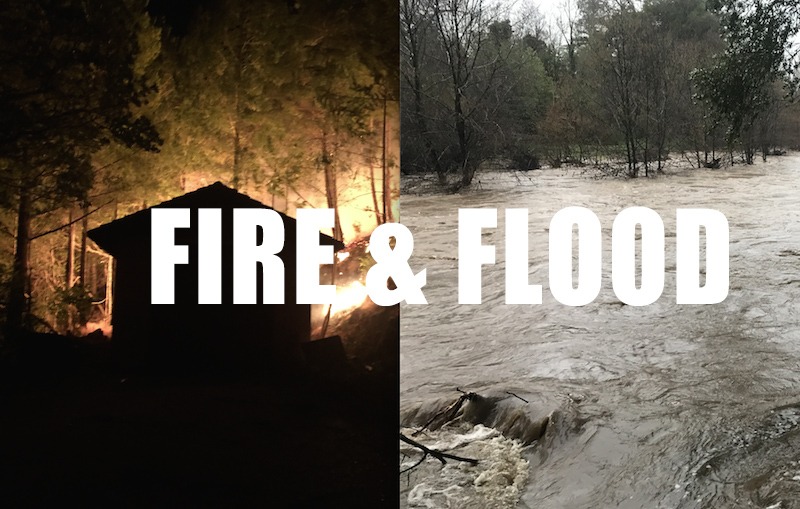The facts are depressing and disturbing: across California wildfires will be a part of our lives every summer, and floods every winter, for the foreseeable future. Overall they are expected to increase in frequency and severity and – for any specific location, such as Sonoma Valley – in unpredictability as well.
That’s bad news, but there is good news too. There are many things we can do, societally and as individuals, to mitigate the dangers of fire and flood and even make them work for us rather than against us. That’s because, by responding fully to these dangers, we will bring ourselves essential benefits we needed anyway – reliable water, clean air, more parks and open space and natural beauty, better functioning neighborhoods and less poverty, to name a few.
Both fire and flood have been a part of California’s natural environment for millennia. In the beautiful woodlands, meadows and chaparral where we live, both are necessary for a healthy ecosystem. Fire rejuvenates the landscape, while flooding recharges groundwater – and both create essential habitat.
But the more people encroach on wild lands and flood plains, the more their own property and lives will be endangered by fire and flood. And climate change is amplifying those effects, increasing the frequency and intensity of both. In order to help Sonoma Valley become fully adapted to these realities, we will need to adopt new practices that protect our homes from wildfire, conserve and replenish of our water supply, and in the process, create better habitats for wildlife and humans alike.
What does that mean for you, the individual? A variety of changes to our habits and surroundings, even small ones, can make a big difference over time. As one example, people preparing for wildfire by creating a defensible space around their home – a zone, usually about 30 feet wide, designed to prevent flames and embers from reaching the structure – can fill that space with drought-tolerant native plants that are green throughout the summer, thereby being fire-smart, water-wise and wildlife-friendly all at once.
Of course, some important changes will require government involvement. For example, it takes strong land use plans to keep our most flammable wildlands and our floodplains largely undeveloped, so that people are kept out of harm’s way, and so ecosystems and aquifers may be replenished. And for that to happen, people must vote with the environment’s long-term health firmly in mind. If enough people do that, changes will occur on a societal level, and that means a global level. In the end, societies are made up of individuals.
Some say the worst dangers of climate change – its “four horsemen” – are heat waves, drought, fire, and flood (which can be caused by both storm water and sea rise). These are all familiar features of Sonoma Valley’s history, but because of climate change, we can expect all of them to be more frequent, more intense, and less predictable than in the past. And yet, with wisdom, patience, ingenuity and cooperation, we can overcome these problems – and in the process make our communities more beautiful and sustainable than ever before.

